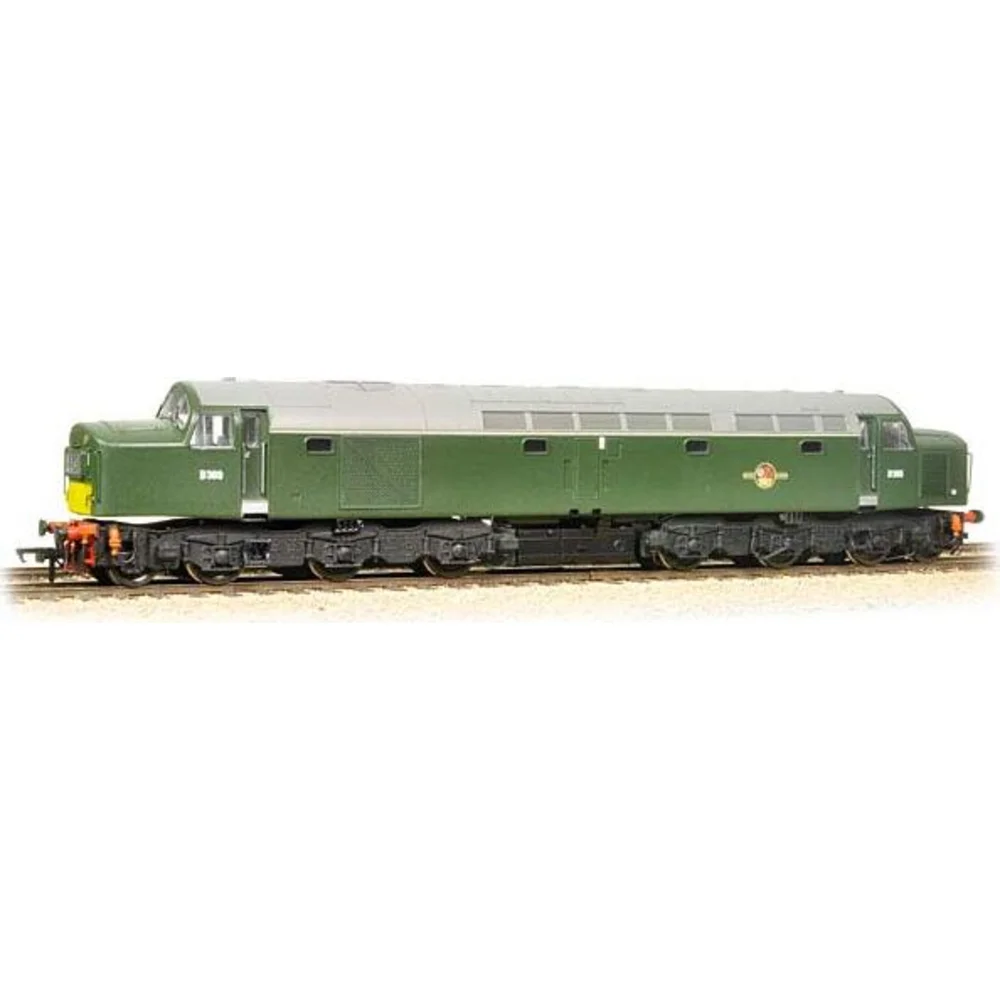Bachmann 32-481
British Rail Class 40 D369 British Rail Green
Tooling
In 2014, Bachmann unveiled a major upgrade to its OO gauge British Rail Class 40 model, replacing the 2003 tooling with a completely reworked design. This revision addressed feedback from modellers and incorporated modern standards for detailing, digital control, and sound. The Class 40, an English Electric Type 4, remained a favourite among enthusiasts for its distinctive “Whistler” sound and long service life, making this upgrade highly anticipated.
Tooling Features
- Scale: OO gauge (1:76).
- Construction: High-quality plastic bodyshell with extensive separately fitted details; diecast chassis for strength and weight.
- Detailing: Accurate body profile, etched fan grilles, fine handrails, lamp irons, sandpipes, and bufferbeam pipework. Sprung buffers and detailed cab interiors with driver figure in one cab. Rotating radiator fan (non-powered) included.
- Couplings: NEM pockets to NEM362 standards, tension-lock couplers supplied.
Mechanical & Electrical
- Motor & Drive: Five-pole, twin-shaft motor with twin flywheels driving all six axles via a 1Co-Co1 gear arrangement for smooth, prototypical performance.
- Pickups: Electrical pickup from all twelve driving wheels.
- Minimum Radius: Second radius curves (approx. 438mm).
- Lighting: Directional lighting with headlights and tail lights; cab lighting controllable via DCC functions.
- Weighting: Substantial diecast chassis for excellent traction and haulage.
DCC Capability
DCC Ready with a 21-pin socket. Sound-fitted versions supplied with ESU LokSound decoders and twin speakers for enhanced audio. All models include provision for speaker installation, and sound-equipped variants operate on both DCC and analogue layouts with basic sound functions.
Liveries Produced
- BR Green (early and late crest, with variations such as no yellow ends, small yellow panels, and full yellow ends).
- BR Blue (standard and weathered finishes).
- Special editions including preservation-era schemes such as BR large logo blue (e.g., 40145).
Headcode variations included disc headcode, split boxes, and centre headcode styles, accurately reflecting prototype differences.
Reviews & Commentary
The 2014 upgrade was widely praised for its improved accuracy, refined detailing, and modern electronics. Reviewers highlighted the crisp molding, etched components, and smooth running qualities. The inclusion of cab lighting and sound options was considered a major step forward. Minor criticisms included occasional tightness in body removal for decoder fitting and slightly shallow bogie detail, but overall reception was highly positive.
Media & Social Media
Coverage in Hornby Magazine, online reviews, and YouTube channels noted the model’s strong performance and visual appeal. Sound demonstrations showcased authentic recordings, adding realism for DCC users. Enthusiasts on forums praised the upgrade as a benchmark for British diesel models of the era.
Interesting Notes
This tooling remained the standard until further refinements in 2023. It introduced features such as cab lighting and factory sound options, setting a new level of expectation for Bachmann’s diesel range.
Class & Prototype
- Class: British Rail Class 40
- Traction: Diesel
- Transmission: Electric
- Built: 1958-1962
- Total Built: 200
British Rail Class 40 "Whistlers" were iconic diesel-electric locomotives that pioneered Britain's transition from steam to diesel traction between 1958-1985. Built by English Electric with distinctive turbocharger whistles and 2000hp engines, these 200 locomotives initially worked prestigious services like the Flying Scotsman before settling into secondary passenger and freight duties. Their conservative engineering prioritized reliability over power, leading to eventual displacement by more capable designs. Seven locomotives survive in preservation, while excellent model representations from Bachmann, Graham Farish, and Heljan serve railway modellers across all scales. The class remains beloved for its pioneering role, distinctive sound, and elegant styling that defined the early diesel era.
No prototype found.
Operator & Livery
- Operator: British Rail
- Livery: Green
British Rail (1965-1997) transformed Britain's railways through revolutionary modernisation, introducing the iconic double arrow logo, Rail Blue livery, and business sectorisation. BR pioneered high-speed rail with the InterCity 125 and Advanced Passenger Train, electrified major routes, and created profitable divisions like InterCity and Network SouthEast. From steam succession through diesel and electric development to privatisation preparation, British Rail's diverse locomotive fleet, multiple livery schemes, and operational scenarios provide unparalleled variety for railway modellers across all scales and periods.
